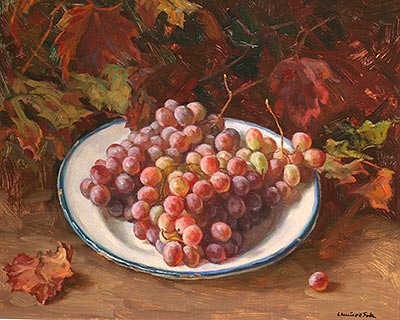BRINGING HERITAGE CLOSER. TUDELA
5 September 2008
The Bardenas and La Mejana. Landscape and still life in Tudela's painting.
D. Manuel Motilva Albericio. Director of the Muñoz Sola Museum of Tudela.
La Mejana, an island in the river, is a territory of profound geographical personality and unequivocal demarcation that, despite its modernity (it dates back to the beginning of the 19th century), has contributed to define the identity of Tudela as a producer of excellent fruits of the orchard, making its name a synonym of quality and inseparable from that of the city itself: Tudela and its Mejana.
At a greater distance, to the northeast, are the Bardenas Reales, a vast territory of very unique and complex orography whose Quaternary clays are deeply shaped by the action of the wind, the rain and the extremes of its climate, which generates reliefs of multiple contrasts, capricious forms and violent backlighting.
Because of their distinguished aesthetic peculiarity, both landscapes have been taken by painters as the preferred subject of their paintings, thus contributing to make these landscapes referential and become signs of identity of our territory. The painters will return to them repeatedly to continuously renew their different aesthetic interpretation of them throughout the twentieth century.
Mejana, Bardenas, the Ebro, (with the bridge) and the Moncayo, (which closes to the south the natural limit of the landscape of La Ribera), are the four elements that make up the genuine identity of the aesthetic landscape of Tudela, to which painters have resorted as unavoidable elements of artistic reference letter , while the new pictorial trends notice a lesser interest in describing them.
With regard to the treatment of the still life by local painters, it can be noted that in their paintings the 'physical' nuance of the objects represented predominates, in that they try to enhance the sensory qualities of the same, multiplying to satiety the representation of the 'typical' products of the Tudela orchard: all class of fruits and vegetables but only some game, hardly any pictures of kitchens and very little attention to the pictures of flowers.
This exaltation of the sensorial, highly stimulated by public interest, makes it difficult for painters to work on the 'metaphysical' values of still life paintings, an aspect to which only painters with academic roots pay attention, since the current trends, mainly cultivated by young artists, focus their attention on the formal aspects of the still life and on the possibilities offered by the audiovisual media.

César Muñoz Sola, "Landscape of Las Bardenas".

César Muñoz Sola, "Still life with grapes".
PROGRAM
TUESDAY, 2 SEPTEMBER
Place: Tudela. Dean's Palace
16.30 h: Opening and presentation of the course
16.45 h. The recovery of the ornamentation of Tudela Cathedral
Ms. Mercedes Jover Hernando. Chair of Navarrese Heritage and Art
17.45 h. Coffee break
18.15 h. Santa María de Tudela and the medieval architecture of the Ebro Valley
Mr. Javier Martinez de Aguirre Aldaz. Complutense University of Madrid
19.15 h. Artistic relations between Aragon and Navarre in the 15th century: the case of Tudela Cathedral
Ms. Carmen Lacarra Ducay. University of Zaragoza
20.15 h. visit guided tour of the cloister of Tudela Cathedral
WEDNESDAY, 3 SEPTEMBER
Place: Tudela. Dean's Palace
16.30 h. Architecture and the city in the 16th century
Ms. María Josefa Tarifa Castilla. Chair of Navarrese Heritage and Art
17.30 h. Coffee break
18.00 h. Illustrious women of the Renaissance in the Magallón palace
Ms. Mª Concepción García Gainza. Chair of Navarrese Heritage and Art
19.00 h. visit to the Magallón palace
THURSDAY, 4 SEPTEMBER
Place: Tudela. Dean's Palace
16.30 h. Art and devotions in Tudela between the 16th and 18th centuries
D. Ricardo Fernández Gracia. Chair of Navarrese Heritage and Art
17.30 h. Coffee break
18.00 h. visit guided tour of the convents of the Company of Mary, Capuchin and Dominican nuns in Tudela
FRIDAY, 5 SEPTEMBER
Place: Tudela. Dean's Palace
16.30 h. Art, report and collective identity: The commemorative monument in the city of Tudela
Mr. José Javier Azanza López. Chair of Navarrese Heritage and Art
17.30 h. Coffee break
18.00 h. Tudela and Navarrese painting from the period between the centuries
D. Ignacio J. Urricelqui. Chair of Navarrese Heritage and Art
19.00 h. The Bardenas and La Mejana. Landscape and still life in Tudela painting
D. Manuel Motilva Albericio. Director of the Muñoz Sola Museum in Tudela.
20.00 h. Closing ceremony
